The New Moritz Grossmann Universalzeit Puts the World on Your Wrist
Read the time anywhere in the world at a glance with MG’s new Universalzeit.

Travelling the globe nowadays, disregarding any current Covid-related restrictions, is relatively easy. You can simply hop on a plane and be halfway across the planet within a day to visit friends and relatives, have important business meetings, or simply enjoy a vacation. Pretty much the only thing you have to take into account is the corresponding time difference between where you started your journey and where you ended up. To make that a little bit easier, wearing a proper travel watch makes things very practical. This was already quite clear in the early days of international travel, even before the standardisation of world time. Following the establishment of a common prime meridian during the Prime Meridian Conference held in Washington D.C. in 1884, life for the international traveller and trader became much easier. The new Moritz Grossmann Universalzeit perfectly captures the historical relevance of this standardisation of time and mixes it with proper high-end watchmaking.
Universal Time
Prior to the global standardisation of time, municipalities relied on a communal clock that was set in accordance with the Sun’s position. This worked just fine before people started to travel further and further from home, thanks to developments like the train in the late-19th century. As speed and distance to which people travelled increased significantly, the need for a more precise and globally agreed-upon standard of time grew as well.
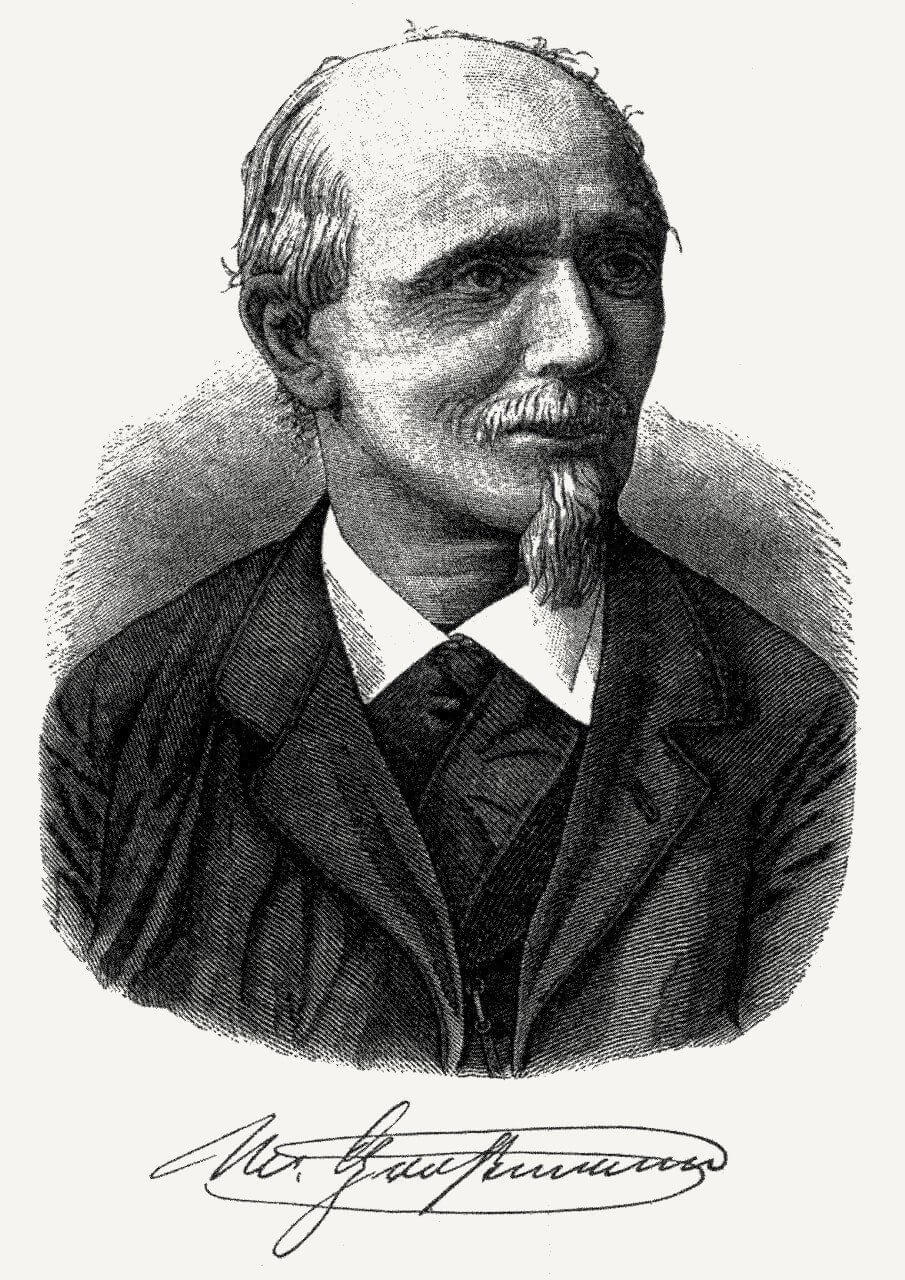
On the 8th of February 1879, Scottish-Canadian engineer and inventor Sir Sandford Flemming proposed to divide the world map into segments, each 15 degrees apart, each of the 24 resulting zones set apart by one hour. This was to be the start of a set of agreements that became the standard for time across the world, finalised on the 22nd of October 1884, with the Royal Observatory in Greenwich, England, marking the prime meridian. Each time zone would be offset by +1 hour towards the east and -1 hour towards the west. To this day, what became known as Universal Time, remains the foundation of international timekeeping.
Not long after the introduction of Universal Time, Moritz Grossmann (the watchmaker) would travel from Dresden to Leipzig to give a lecture on this very topic for the Polytechnic Society. The title for his essay was “Universal Time and the Introduction to Civilian Life”, signifying that this wasn’t something that was easily and quickly accepted in everyday life back then. It also represents the introduction of the Moritz Grossmann Universalzeit roughly 140 years later.
Stainless steel case
There’s no hiding the Universalzeit’s intentions: both the name and the dial reveal what it’s all about. It is the second model from Moritz Grossmann dedicated to travelling across multiple time zones, following the GMT we reviewed here, and one with a clever display and practicality. But let’s start with the basics before we delve into the technicalities.
To begin with, the Universalzeit is a large watch with a three-piece stainless steel case measuring 44.5mm across and 13.78mm in height. The domed sapphire crystal has a subtle bevelled edge and an anti-reflective coating. The sapphire crystal caseback is held in place with seven screws.
A signature Moritz Grossmann element, although not present in all its watches, is the crown and pusher at 3 and 4 o’clock. In the crown’s natural position, you can wind the movement but not set it. To do that, you pull out and release the crown, which immediately returns to its normal position. In doing so, you disengage the winding system and engage the setting system.
You can now set the time accordingly and release the movement by pressing on the little pusher. This system keeps unwanted dust or water out of the case and also prevents unwanted adjustment of the hands when pushing in or screwing down a traditional crown.
The final element on the outside of the Universalzeit is the small crown at 10 o’clock. This is used to independently advance or retract the central hour hand in one-hour increments. In the centre position, the crown is blocked; turning it towards 9 o’clock will allow you to move the hour hand forward while turning it to 11 o’clock moves it backwards.
The world on your wrist
Obviously, the main talking point of the Moritz Grossmann Universalzeit is its dial. And thanks to the narrow bezel, there’s plenty to see. The dial is made of solid silver with a very fine sunray-brushed deep blue colour. The map of the world, not entirely true to scale, is painted and printed with white meridians and brown landmasses.
In six positions, the dial reveals the Universalzeit’s unique hour disc underneath. The edges of each hole are bevelled and rhodium-plated. From left to right, you can see the hour in Phoenix, Rio de Janeiro, Cape Town, Dubai, Singapore and Tokyo. Although relatively small, the crisp black digits can be read without too much difficulty. Additional cities help determine the corresponding time zones between the six indicated cities.
Central, or main time, is indicated with handmade hour, minute and seconds hands. This is something where Moritz Grossmann really shines, as the hands are polished to perfection. Spread around the outer edge of the dial are applied, polished steel indices, with a seconds/minutes track in white. The final touch on the dial is the white logo printed at 12 o’clock with the trademark Glashütte i/SA (In Saxony) designation other brands in Saxony also use.
The way the watch is set is first to change it to the exact hour of a specific time zone and then adjust the central hour hand accordingly. So, if you are based in Dubai, and it is 2 PM, you first set the number in the corresponding hole to 14. Then, through the pusher at 10 o’clock, you adjust the hour hand to whatever is needed. Now, the two will be aligned. If you cross over a meridian into another time zone, you can again use the pusher to correct for local time in both directions. Let’s say you fly to Singapore; all you do is advance the hour hand four positions, and you are set. The watch will still indicate the correct times in all of the indicated zones, and you can easily work out the rest from there.
Calibre 100.7
Inside ticks the manufacture calibre 100.7, a manually wound movement with a pillar construction. Technically and aesthetically, a Moritz Grossman never fails to impress, as we’ve seen time and time again. The calibre 100.7 is an adaptation of the 100-series of movements, with a newly made module to display the time zones on top. A total of 292 components, including 31 jewels, are needed.
This module has a disc that connects to a 24-tooth ratchet wheel. The white disc is printed with six different sets of digits, each aligned with a hole on the disc and corresponding to a single city or meridian. The ratchet wheel moves the disc forward one step every full hour when the watch is running. This jump is instant, as the ratchet wheel is held in place by a spring, so there’s no unwanted judder on each jump.
The calibre 100.7 also has a stop-seconds mechanism that halts the balance wheel when the crown is pulled for more precise time-setting. Once released through the pusher, the balance wheel immediately jumps into action again. The balance, made in-house, is fitted with variable inertia, poising screws, and a Nivarox balance spring. It measures an impressive 14.2mm in diameter and gently oscillates at a rate of 18,000vph.
All decoration is done by hand to Haute Horlogerie standards. The balance bridge is finished with a hand-engraved floral pattern. Typical of Moritz Grossmann, the screws are heat-treated to a violet hue and polished. The 2/3 bridge is coated with broad Glashütte ribbing, and all the edges are bevelled by hand. The ratchet wheel has a 3-band snailing and a polished click. Basically anywhere you look, you are greeted with superb details.
On the wrist
The Moritz Grossmann Universalzeit comes on a handmade chocolate brown alligator leather strap with a steel pin buckle. Despite the size and relative heft of the watch, I never experienced an issue with comfort or balance. When on the wrist, it’s very easy to manipulate the secondary pusher for the hour hand and move it back and forth. A resounding click lets you know if you’ve set it in the next position.
The main time can be read at a glance, but as said, I did feel the hands blended into the background a touch too much every now and then. The six additional cutouts for the time zones across the globe are large enough to check the corresponding hour. One small detail I’d like to point out is that the use of a bit of Super-LumiNova would have been welcome in poor light situations. Also, as it might be something to take into consideration, the Universalzeit does not take daylight savings into account (so in line with UTC, but not GMT).
The Moritz Grossmann Universalzeit is priced at EUR 42,000 without taxes and is available through the brand’s recently introduced e-Boutique.


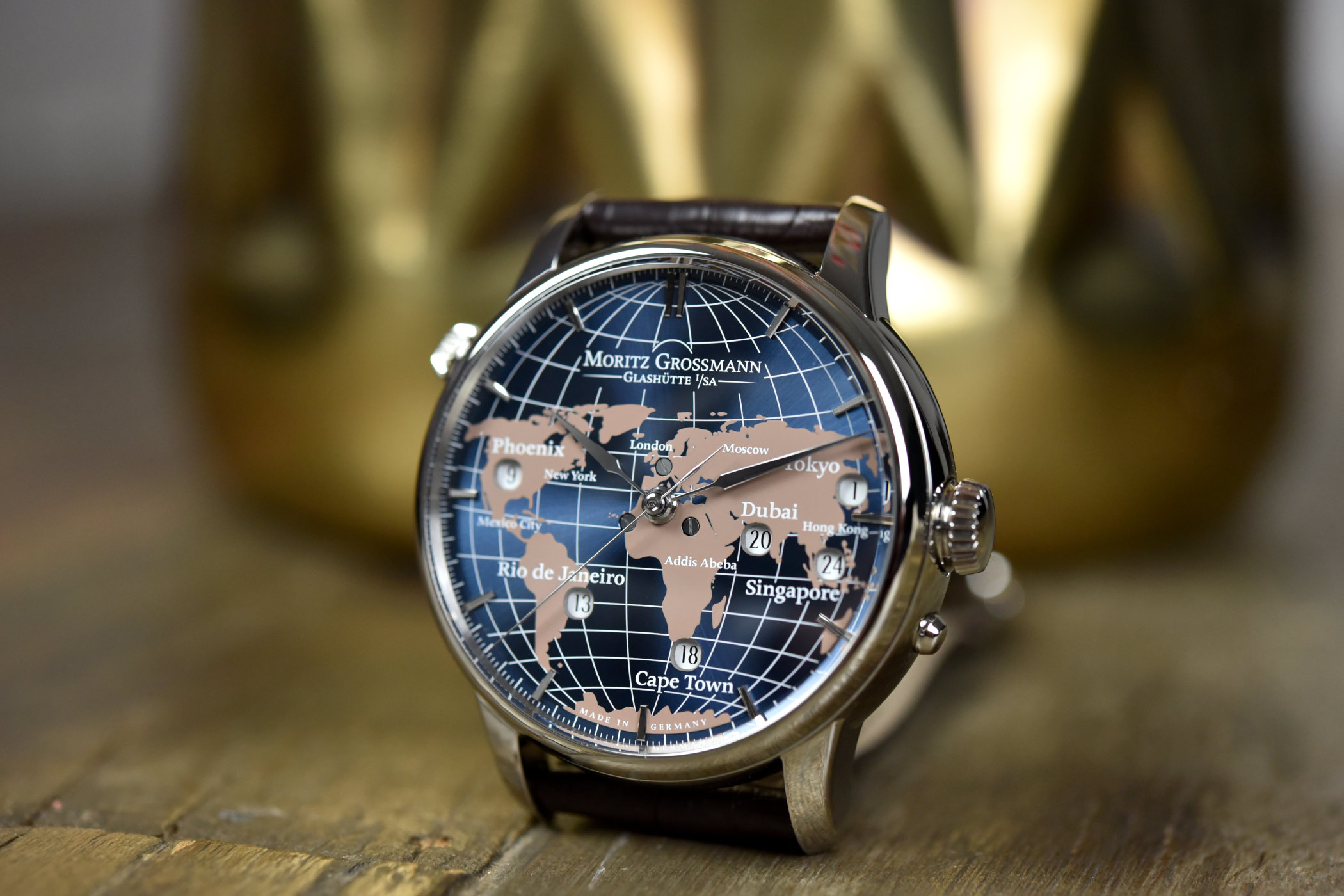
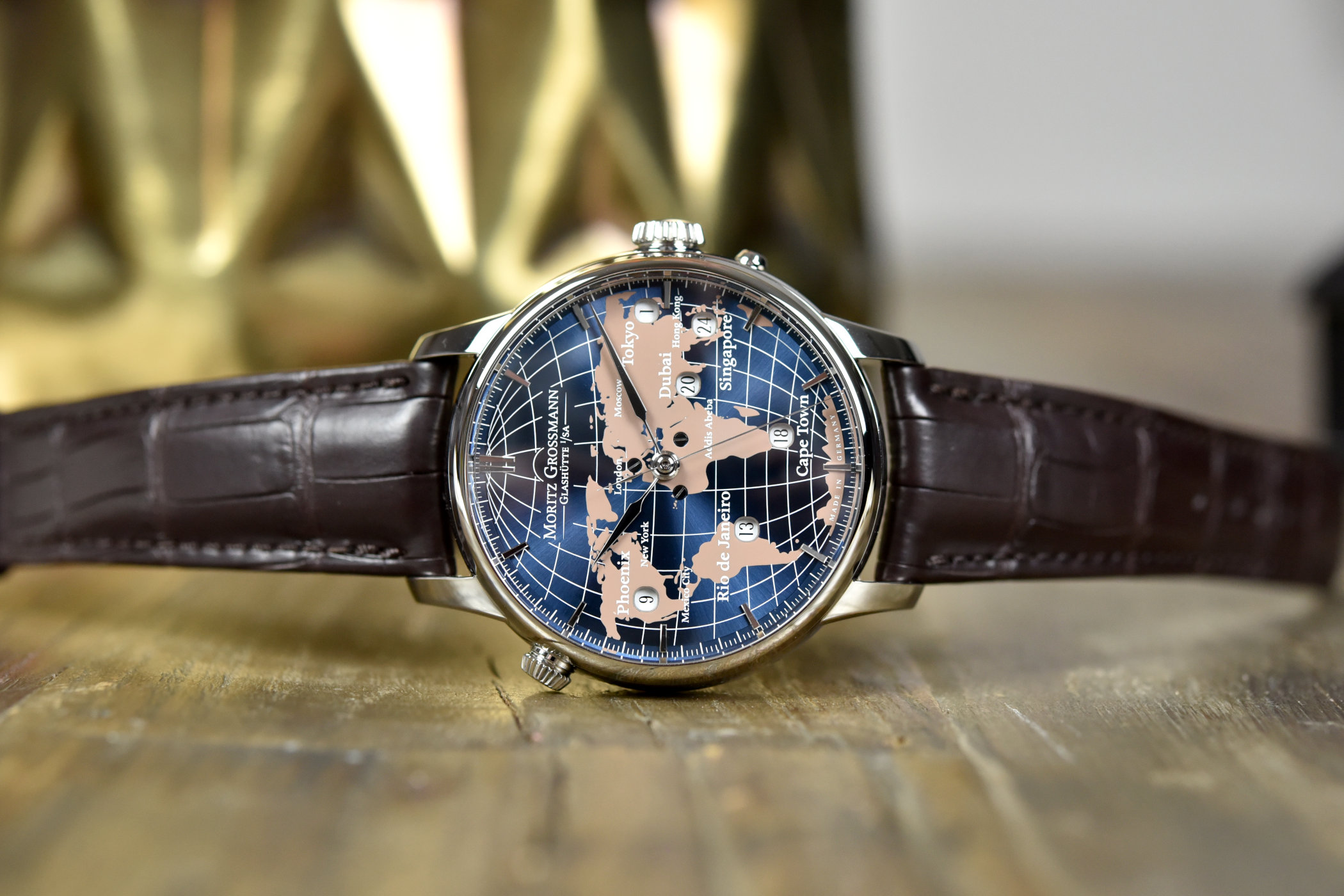
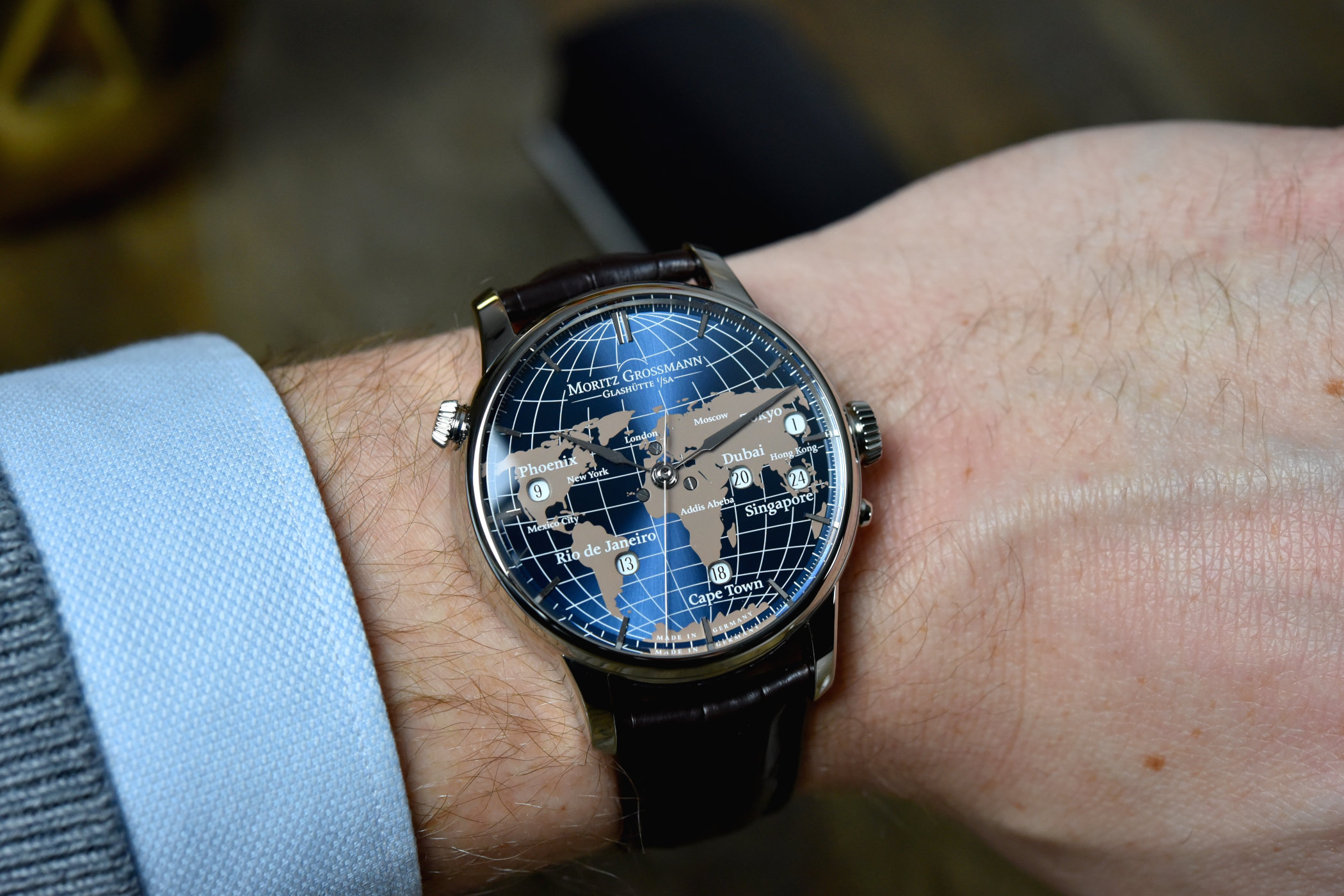
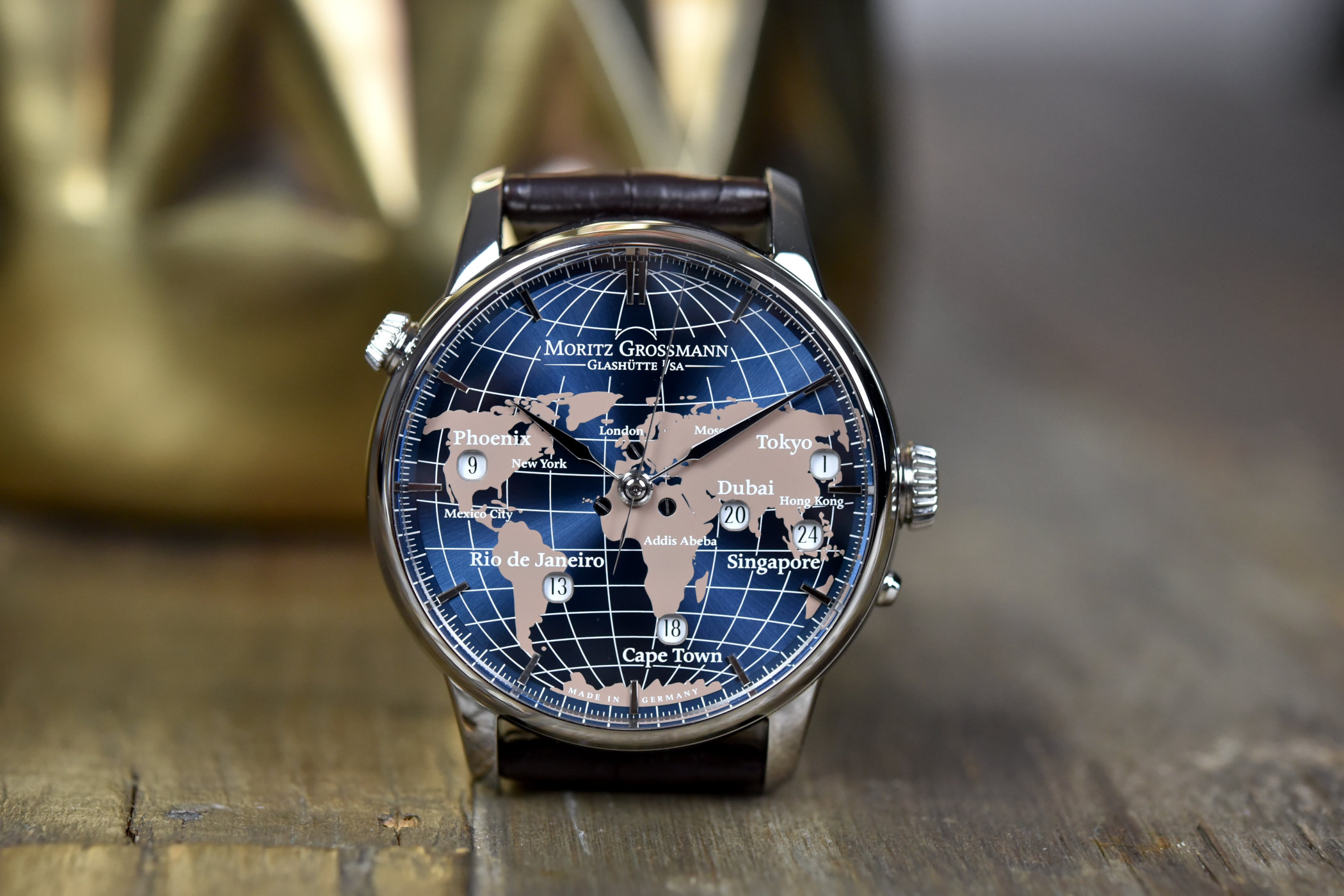
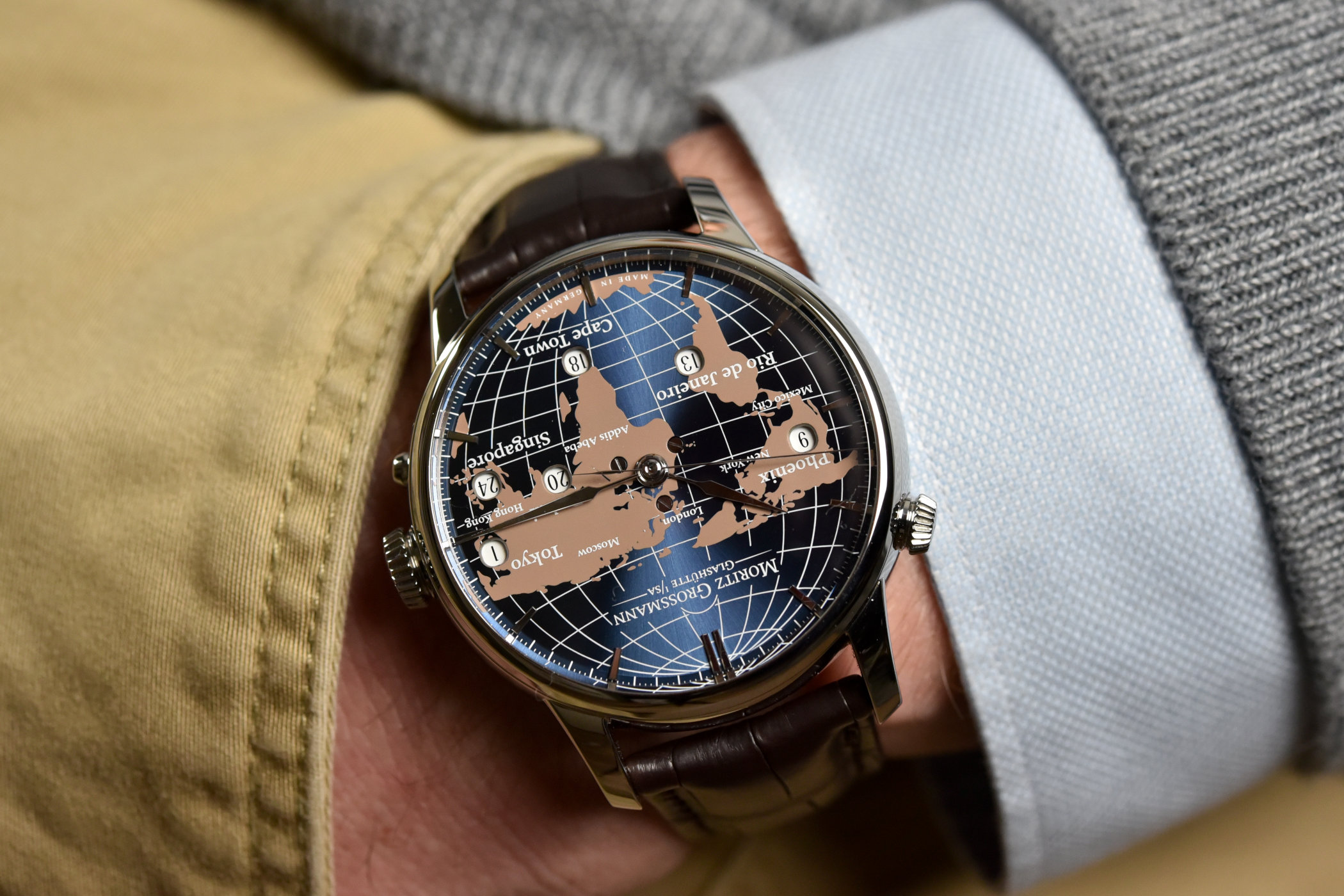
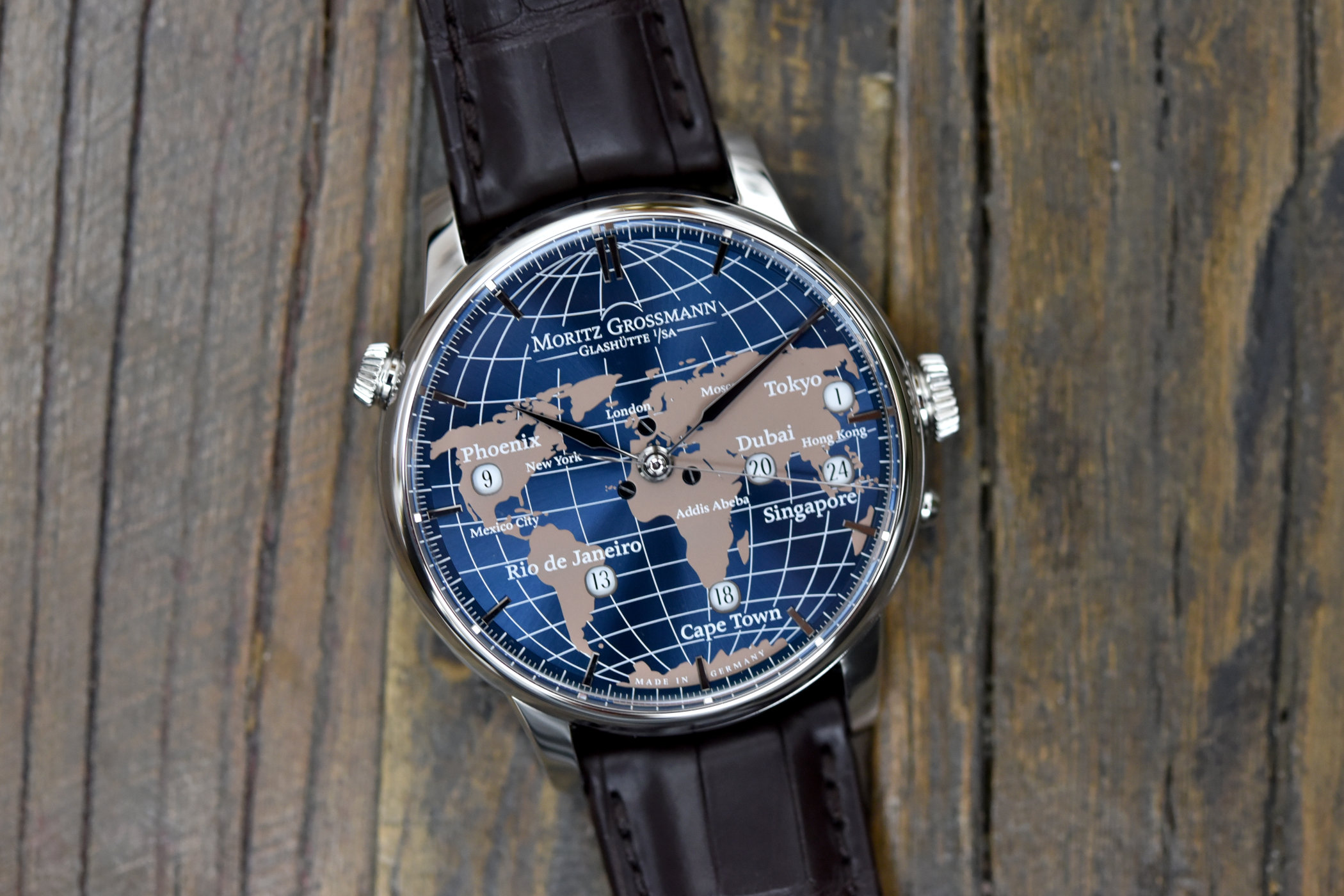
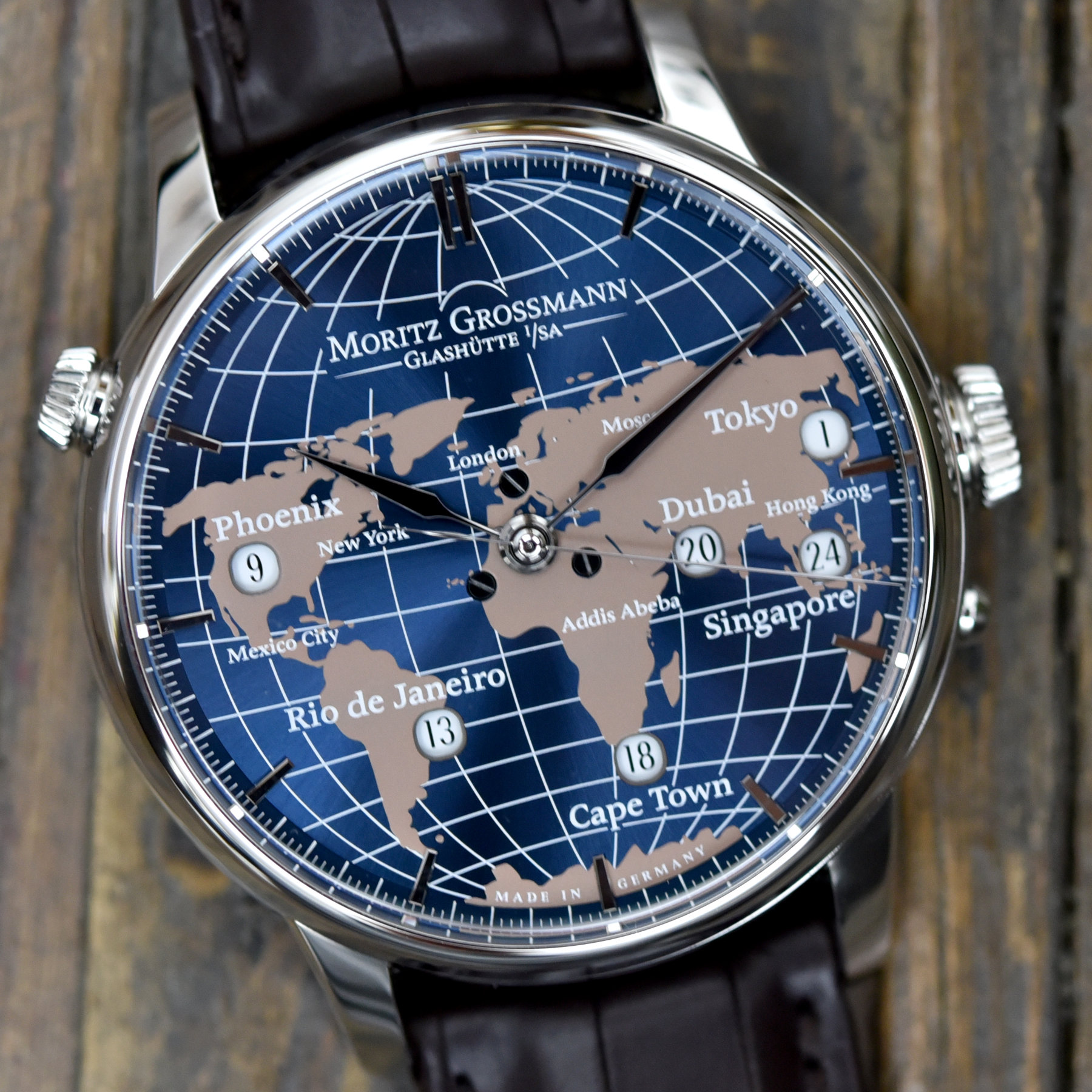
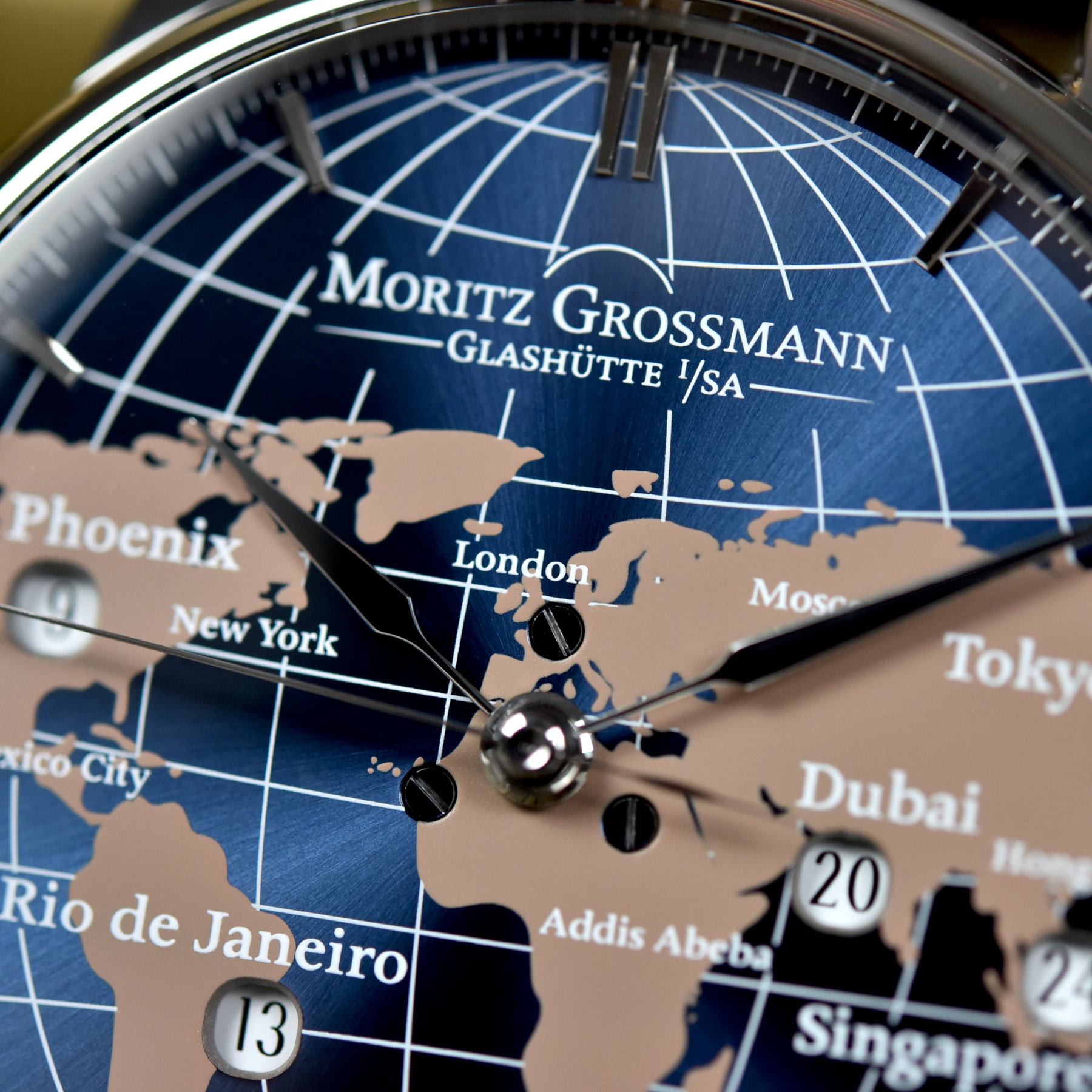
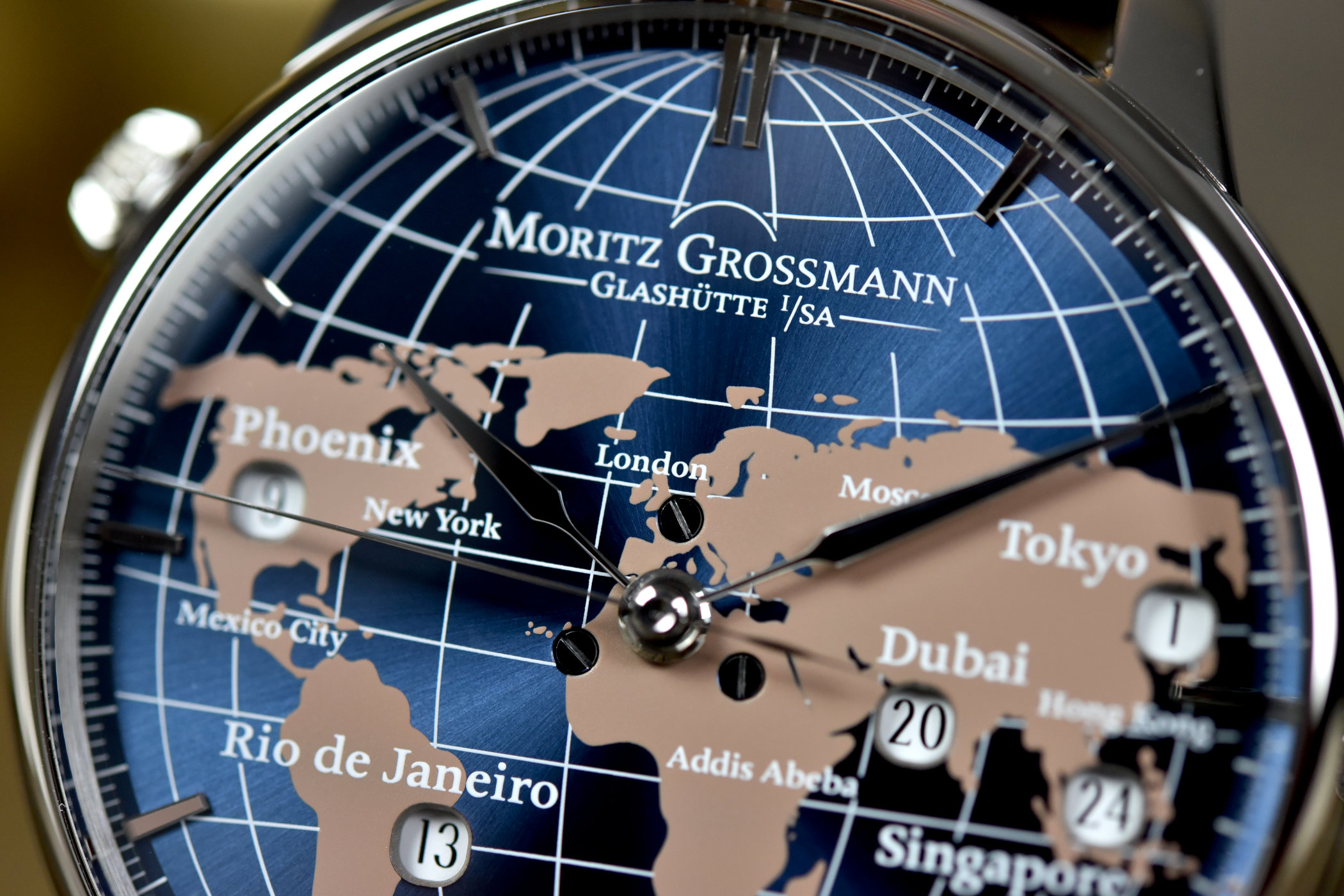
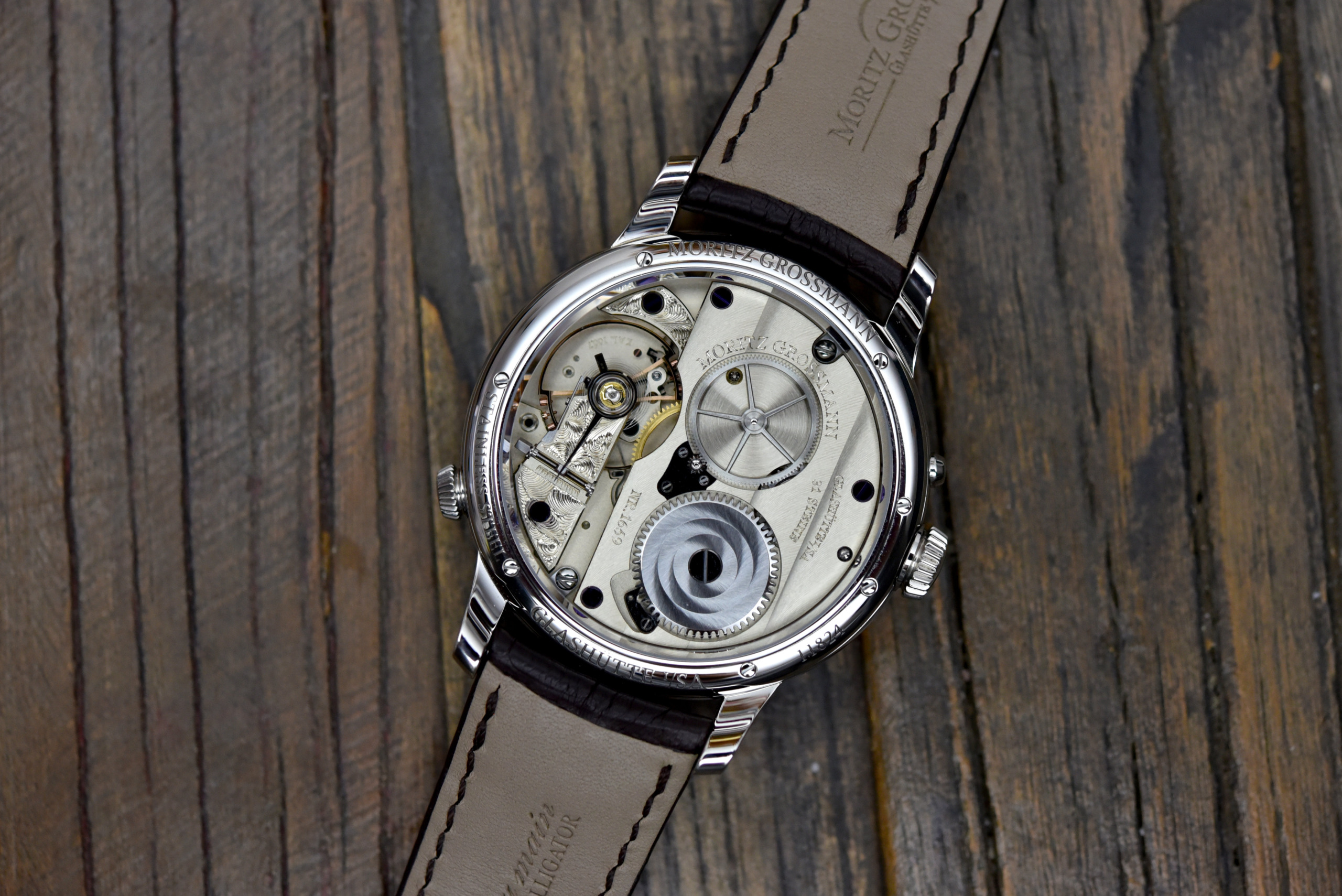
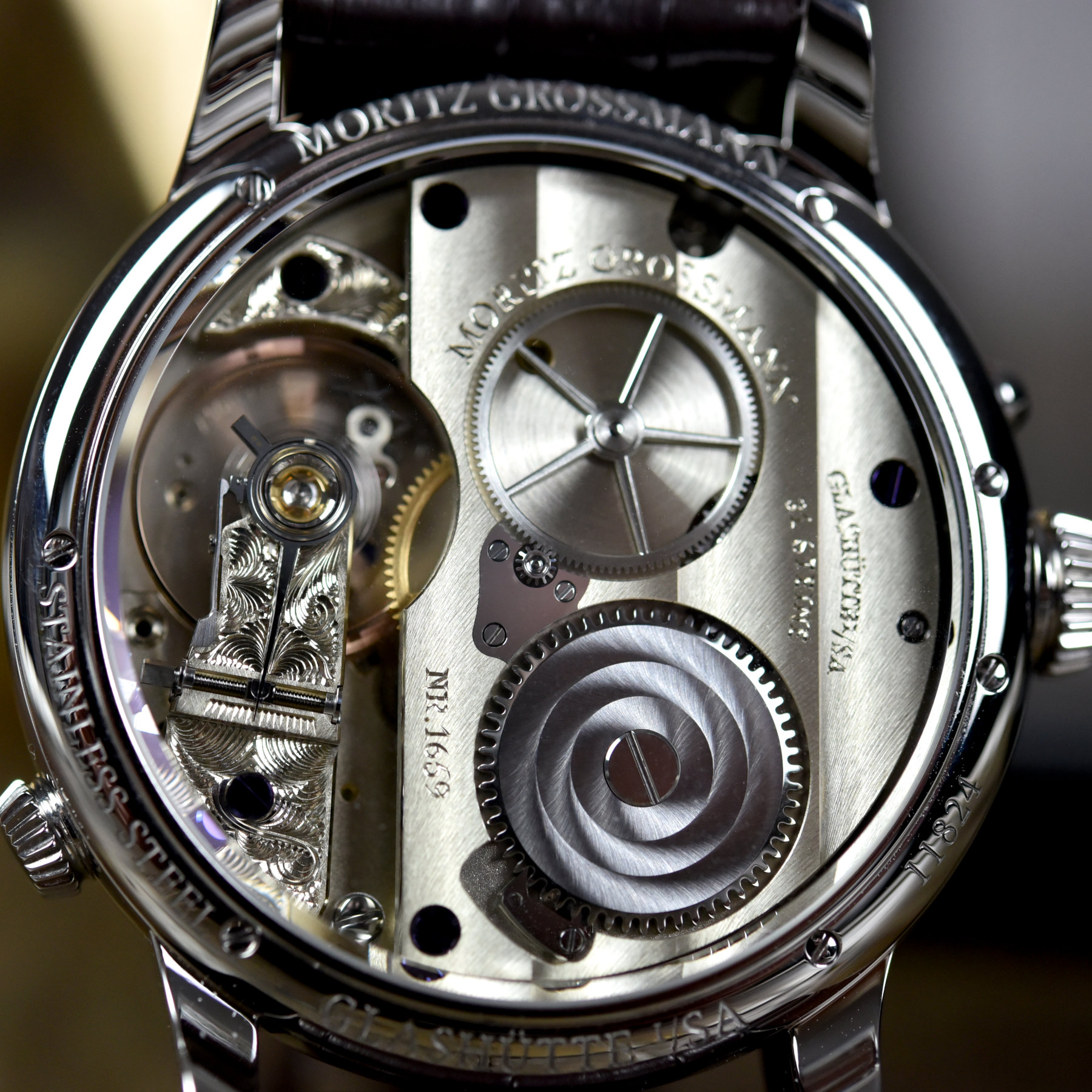
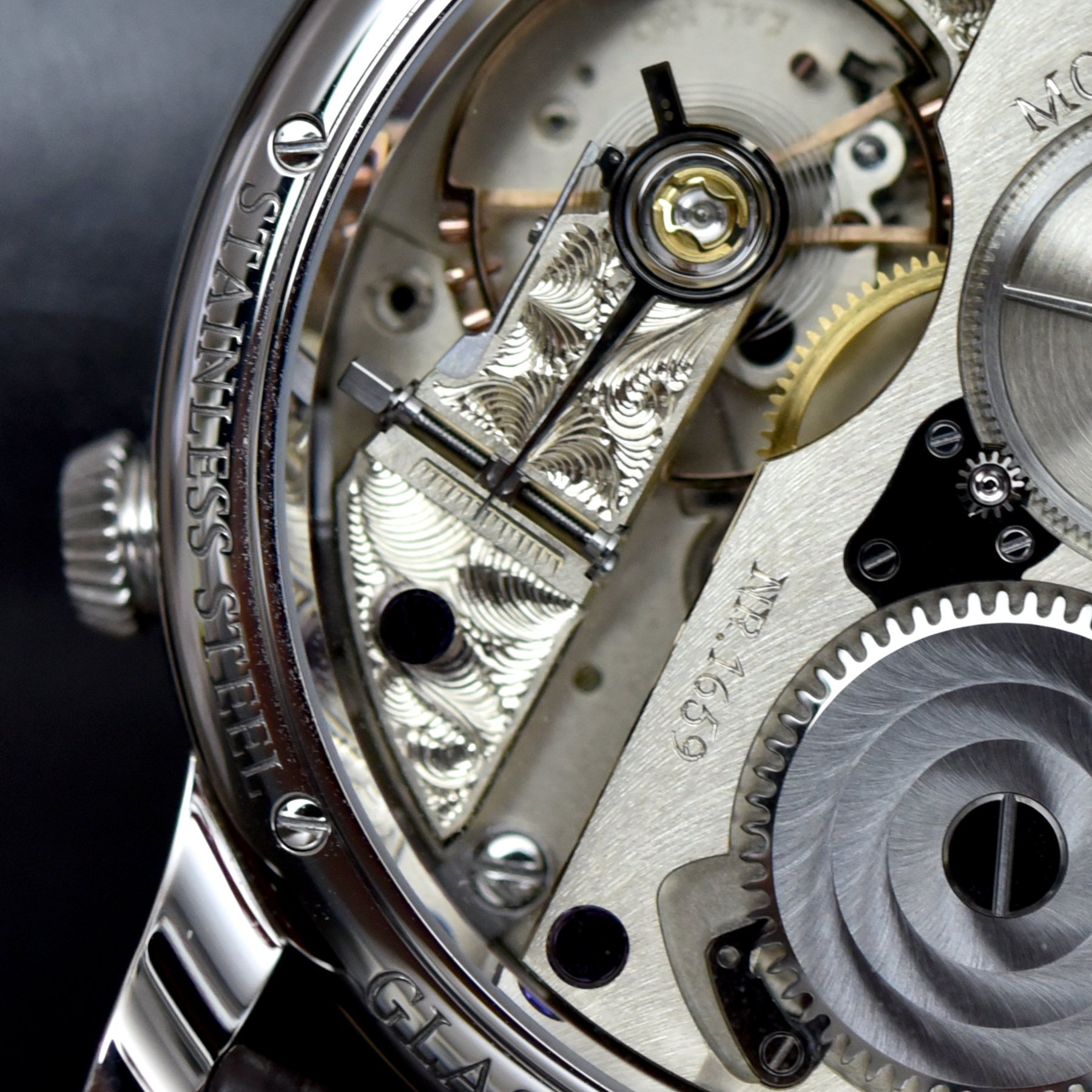
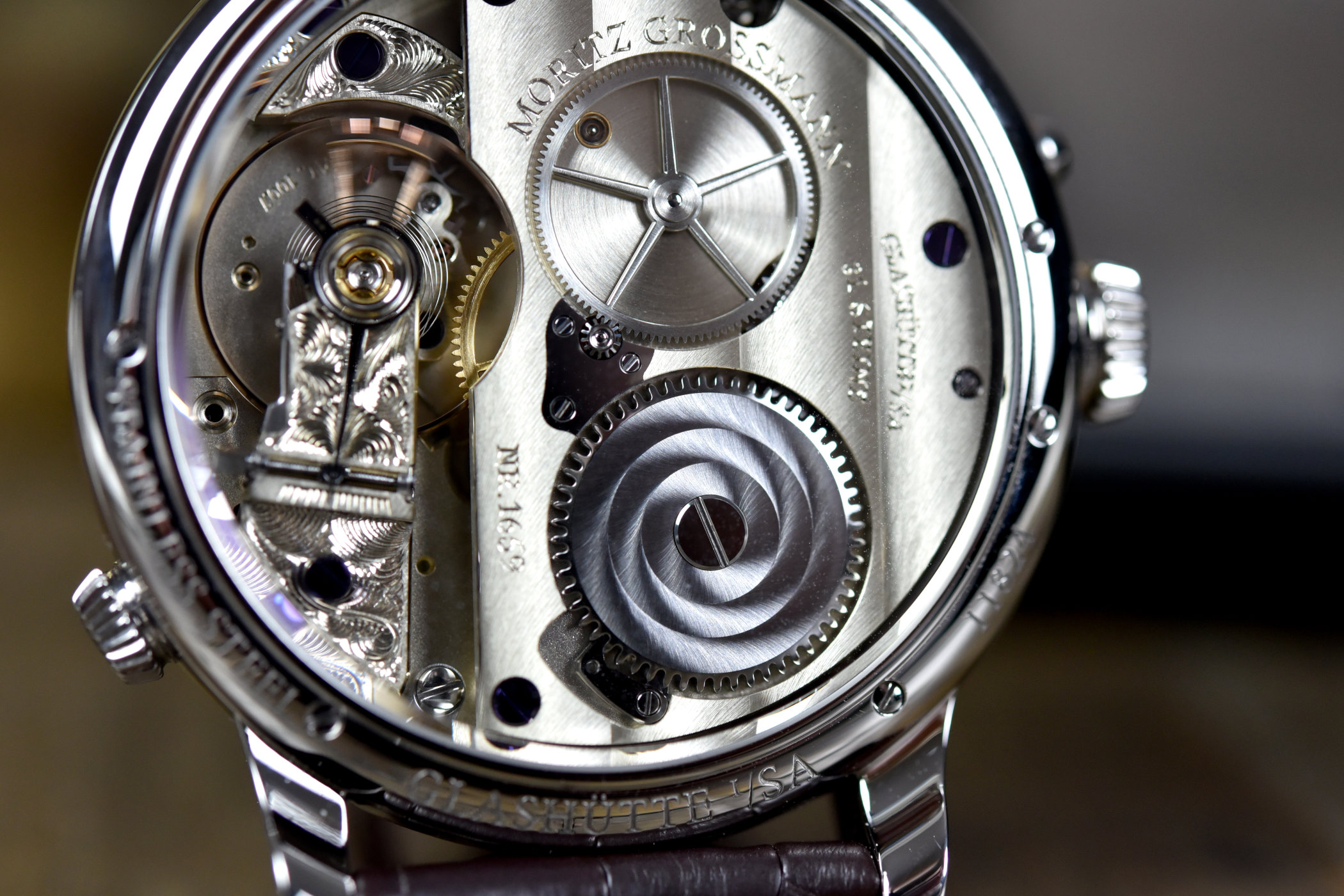
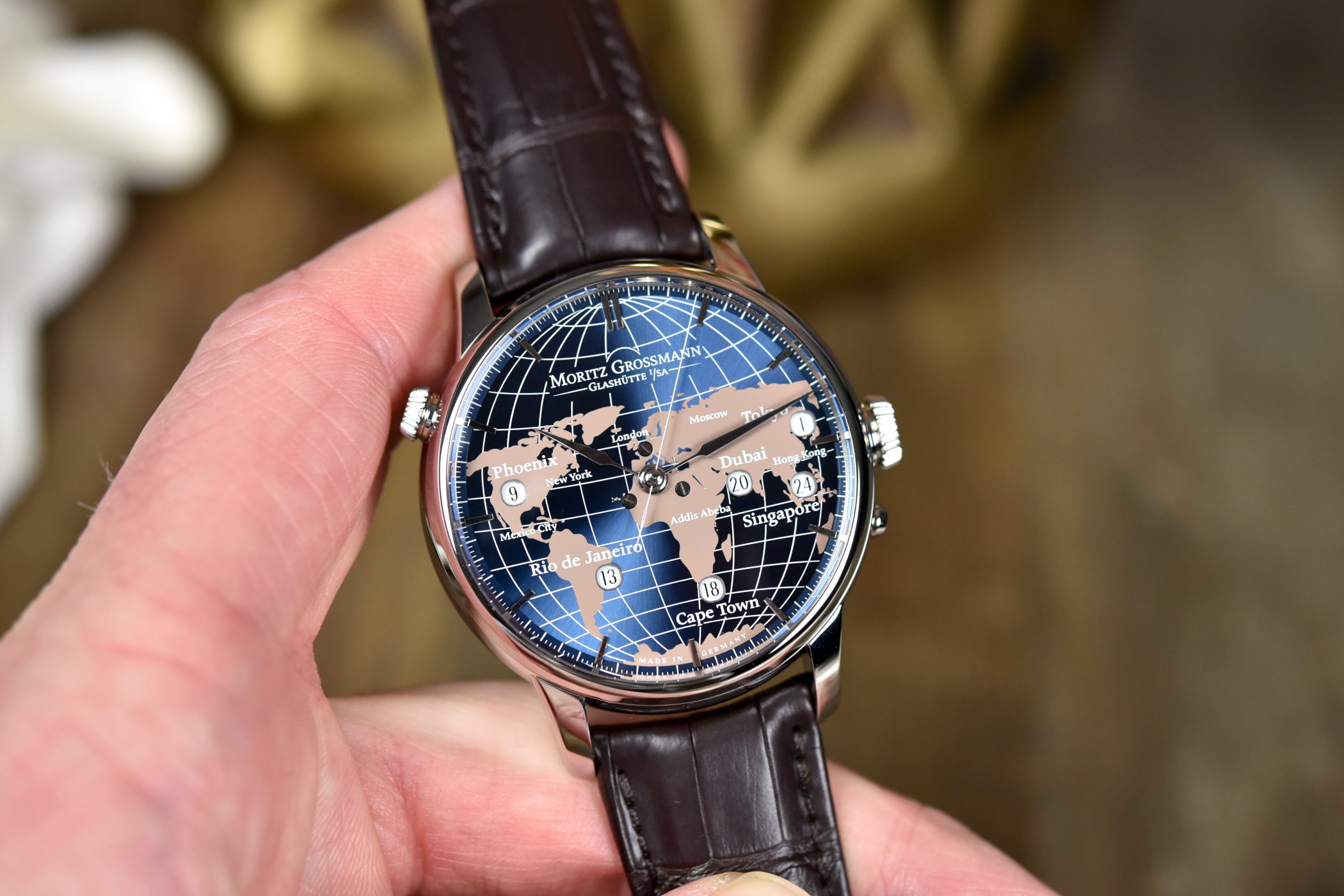
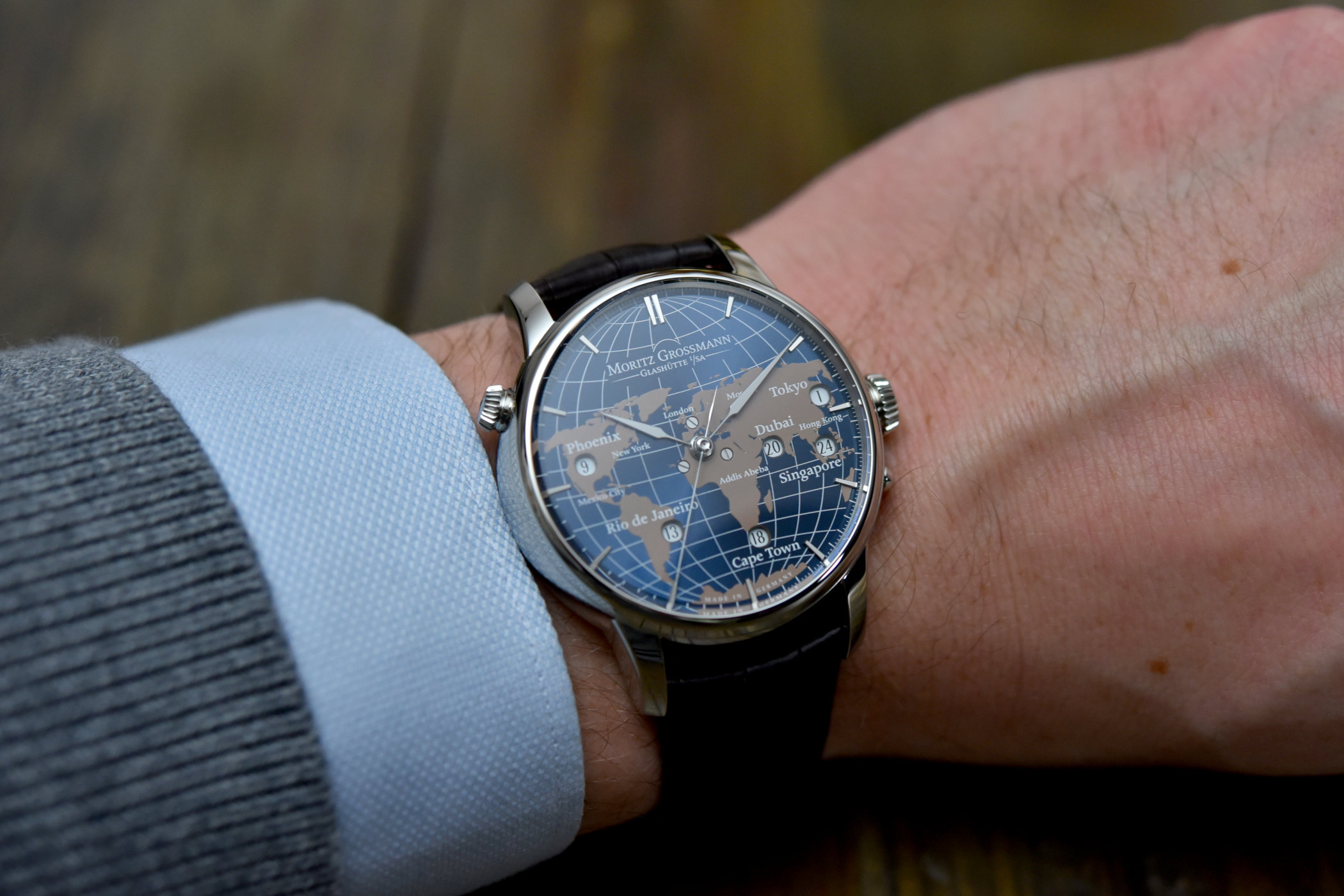



7 responses
really cool watch. the only thing i don’t understand is why they chose to have those 3 visible screws at the center of the dial. kind of ugly and not in line in what otherwise seems to be a top-notch finishing …
Not going to sell too well in Australia I think,
Great idea for a watch. But, the execution, I believe, has two major flaws. First, it doesn’t show the time at GMT nor New York. Arguably two of the more important time zones. Second, the three screw heads protruding from the front of the dial is inexcusable. If this was a $200 watch I’d give them a pass. But at €42k, there shouldn’t be any flaws or design mistakes.
Good try MG. Hopefully, you’re next attempt will be better executed.
I wondered why they choose Phoenix of all places and then realized all these cities do not observe daylight savings time – very clever!!
If you have to ask why you will never understand.
Este es un reloj que apunta claramente a simpatizantes de la tendencia en organizaciones gubernamentales o no, para eliminar el horario de verano. Eso si, también contando que las limitantes mecánicas hayan influido en su diseño sin DST.
Moritz siempre ha estado soldada entre mis marcas favoritas. Con este innovador reloj lo han llevado al terreno de lo mágico. Hasta que no observas el enorme disco de las horas para las ciudades, no logras imaginar que mecanismo fantástico lo hace posible. Añadiria a los apuntes negativos reseñados y comentados, solo uno más: En el centro de la esfera, esos tres tornillos que custodian el eje central, tienen sus ranuras no alineadas. Mejor aun seria que no existieran. Pero no deja de ser un gran reloj. Que lleva consigo la gracia y el mejor espiritu relojero de la epoca dorada del reloj mecanico. Gracias por compartir.